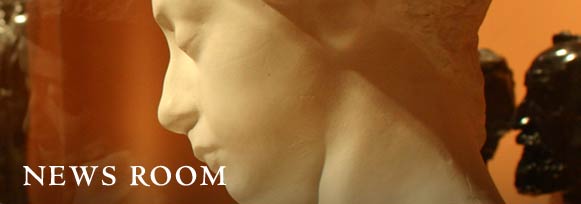Exhibition Entitled "The Beginning Of Seeing: Tribal Art And The Pictographs Of Adolph Gottlieb" Ends Tour At Stanford
Stanford, CA, April 17, 2003, 2002—The pictographs of Adolph Gottlieb and many of the pieces of tribal art he collected throughout his life will be on view at the Iris & B. Gerald Cantor Center for Visual Arts at Stanford University in an exhibition that opens to the public on September 10, 2003. The Cantor Arts Center is the fourth and concluding venue in the two-year run of the show's national tour.
Known best as an abstract expressionist, the painter Adolph Gottlieb (1903–1974) first viewed a vast range of tribal art in Paris as a young man. The mystical quality of the masks, ritual objects, sculptures, textiles, and other objects that he studied in great detail provided him with a key to engaging African art, then very little appreciated in the West. Not only did Gottlieb view these objects as sources of wonder and inspiration, he felt that it was important that he acquire examples so that he could live with them and study them over many years to come.
Beginning in the mid 1940s, Gottlieb began to incorporate motifs from tribal works in the paintings he called his pictographs. These compositions, designed in a loose grid, present symbols and glyphs in each of their compartments. Universal to all cultures, the motifs included snakes, eyes, and hands, for example. In an approach similar to many of his abstract expressionist colleagues, Gottlieb painted the symbols without a plan, allowing his unconscious to direct his selections and juxtapositions.
"Gottlieb used the apparent rawness, the schematic drawing of images, the process of painting as integral to its creation, and the emotional impact of the final result in order to achieve the 'realism' he believed was essential for Western art," said Sanford Hirsch, executive director of the Gottlieb Foundation in New York, and curator of the exhibition. "He opened the door for a generation of American artists who shared his belief in the resonance and emotional power of abstract images."
Many of the paintings and tribal objects that will be on view have been lent by the Brooklyn Museum of Art. The pictographs come from a variety of American museums as well as from the Gottlieb Foundation. Also on view will be the Cantor Arts Center's pictograph The Token, 1945, a gift from Jill and John Freidenrich in 2001. An illustrated color catalogue accompanies the exhibition, entitled The Beginning of Seeing: Tribal Art and the Pictographs of Adolph Gottlieb, which will be on view through January 4, 2004.
The Beginning of Seeing has been organized by the New Britain (Conn.) Museum of American Art in collaboration with the Adolph and Esther Gottlieb Foundation. The exhibition's presentation at Stanford is made possible by the Halperin Exhibitions Fund.



